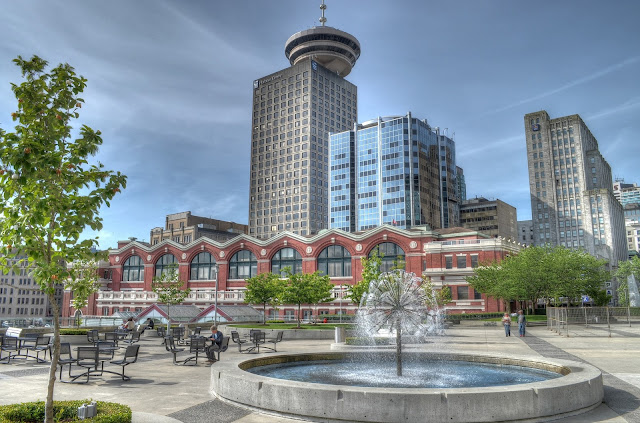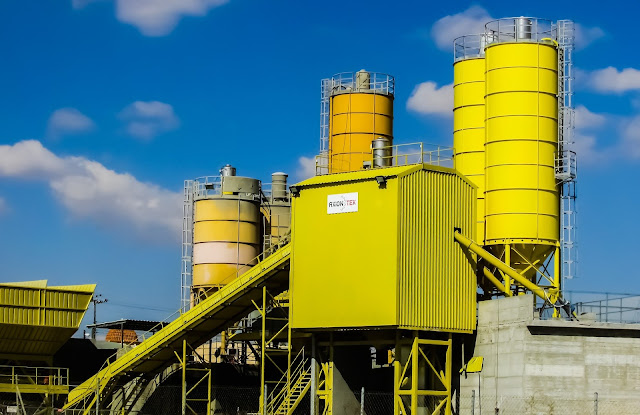Featured
- Get link
- X
- Other Apps
What is Urban Planning?
Hello Everyone!!!!!! Welcome to Archstuff in last article I've told you about Ancient Architecture of India and today I am going to write about Urban Planning some basic knowledge about it.
What is urban planning? That's a simple question but it has a complicated answer. The word "plan" is fairly common in the English language. If you ask someone about their plans for the weekend, for instance, you can expect an answer in reply even if the person you asked hadn't planned a response. A different kind of planning, frequently discussed in the news and government, is a lot harder to describe. You've probably heard some or all of these terms used before: urban planning, community planning, city planning, regional planning. There are also climate action plans, capital investment plans, transportation plans, and strategic plans. There are so many kinds of plans, it can be hard to tell them apart. It gets even more confusing when Engineers, Architects, or Politicians, not planners, are making some of those plans! It's ok if your understanding of planning drops off somewhere between weekend plans and urban plans.
So what is urban planning? There is a specific professional field known as planning. You can get a degree in planning, and then get hired to a job as a planner. Planners can get professionally certified and earn a graduate degree in planning. Professional planners spend their days writing and implementing plans. So let’s say one of the definitions of planning is work done by planners, but that’s obviously a bit too...simplistic. All of these varieties of planning have one thing in common: preparing for the future. Other professions do it too, but preparing for the future is the primary motivation of urban planners. How will people get around in the future? Where will people live and work in the future? How will all of the systems required to support those people electrical grids, sewers, and the water supply fit into the city? These are all questions that planners are working to answer, using tools and policies specific to the field of planning.
The numerous considerations raised by those questions again reintroduce the possibility of architects, engineers, and politicians doing some of the planning. So where does urban planning fit in all this different kinds of planning? The complexity of planning for the future creates a need for an intermediary between different communities and related professional fields, and their fundamental intersectionality is one way urban planners distinguish themselves for other professions. You'll often hear planners say that they are "professional generalists" or they "wear many hats." Planners are like a Swiss Army Knife in the city building process, which is another reason planners are sometimes confused with engineers, architects, or politicians. Given their flexibility, another of the most important roles for planners is engaging with the public.
Planning for the future in today's complex world means addressing the hopes and ambitions of a diverse collection of humans workers of all varieties, residents who live in all sorts of homes and in all kinds of house-hold arrangements, and communities and cultures originating from all over the world. Planners are the first to gather feedback from the public to inform a comprehensive vision for the future. The next step in the planning process is synthesizing all that information and communicating a vision of the future for approval by a governing body like a city council or a county board of supervisors. The approval process can be intensely political, so planning is also fundamentally political. In many cities, planners will also manage the implementation of that approved vision by enforcing the legal tools of planning, usually known as zoning codes.
There is a clear distinction between the process of planning for a city's future and the process of implementing that vision, but planners will be involved in both to ensure the city evolves as planned. Another way to understand planning is by studying the way the field has changed throughout history, and how that evolution in reflected in the world of today. A few men from history had the opportunity to plan cities from scratch, like Pierre Charles L'Enfant in Washington D.C., Daniel Burnhamin Chicago, or Georges-Eugène Haussmann in Paris. Other very powerful men from the 20th century, like Robert Moses and Le Corbusier, transformed entire neighborhoods and cities to fit their preferred model. And yes, in the past, it was mostly men doing the planning.
After zoning codes gained popularity in the early 20th century, planners began to focus almost entirely on land use, and planning began to mean the process of deciding where to locate residential, office, retail, and industrial uses in new and existing cities. The desire to separate residential uses from noxious industrial uses, enabled by the mass production of the automobile and a massive government program to build interstate highways, represents a significant step toward creating the mostly suburban and sprawling country we live in today. In the 21st century, planning is more grass roots in orientation, inspired by the writings of Jane Jacobs, among others, and enshrined in legal and political tools designed to protect the interests and values of local residents, businesses, and communities.
The term urban planning, rather than city planning, has become more popular as the public has taken a renewed interest in cities and as the environmental and economic consequences of the 20th century model of planning have become apparent. To this day, numerous debates contest the future of planning, and planning continues to evolve as a result. Big questions will determine the kinds of values embedded in contemporary plans like how to address climate change and housing affordability; how to overcome a long history of racist and discriminatory regulatory practices; and how much planners should regulate the form of buildings, not just the use of land. The answers to those questions will shape the world of the mid and long term future.
Thanks for reading and this is not all about the Urban Planning because this topic is vast and I've just told you some basic knowledge about it. So please tell me about this article in comment section below and please don't forget to Subscribe my blog for new article notifications.
- Get link
- X
- Other Apps
Popular Posts
What is the profit margin for ready mix concrete business in India?
- Get link
- X
- Other Apps



Comments
Post a Comment